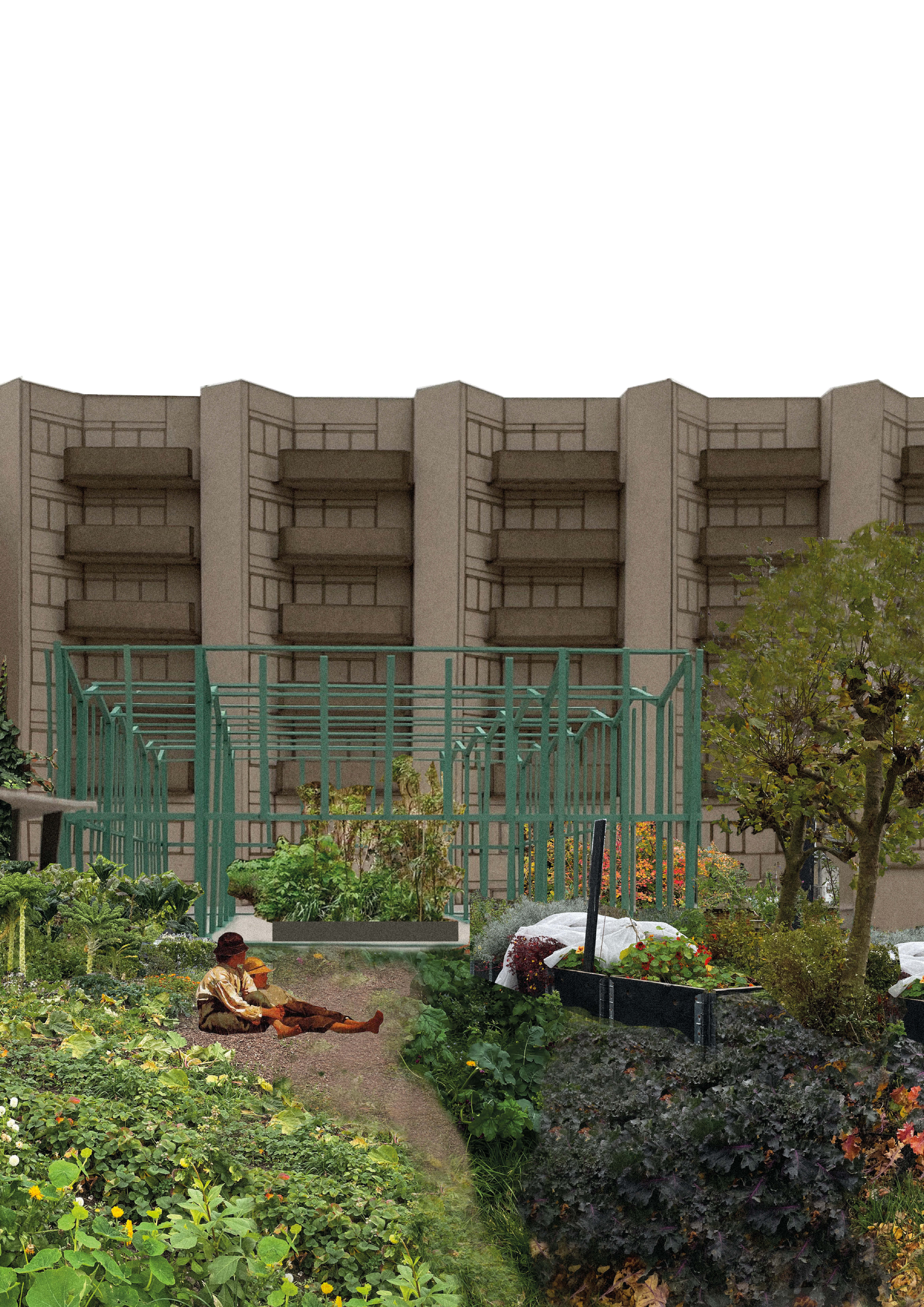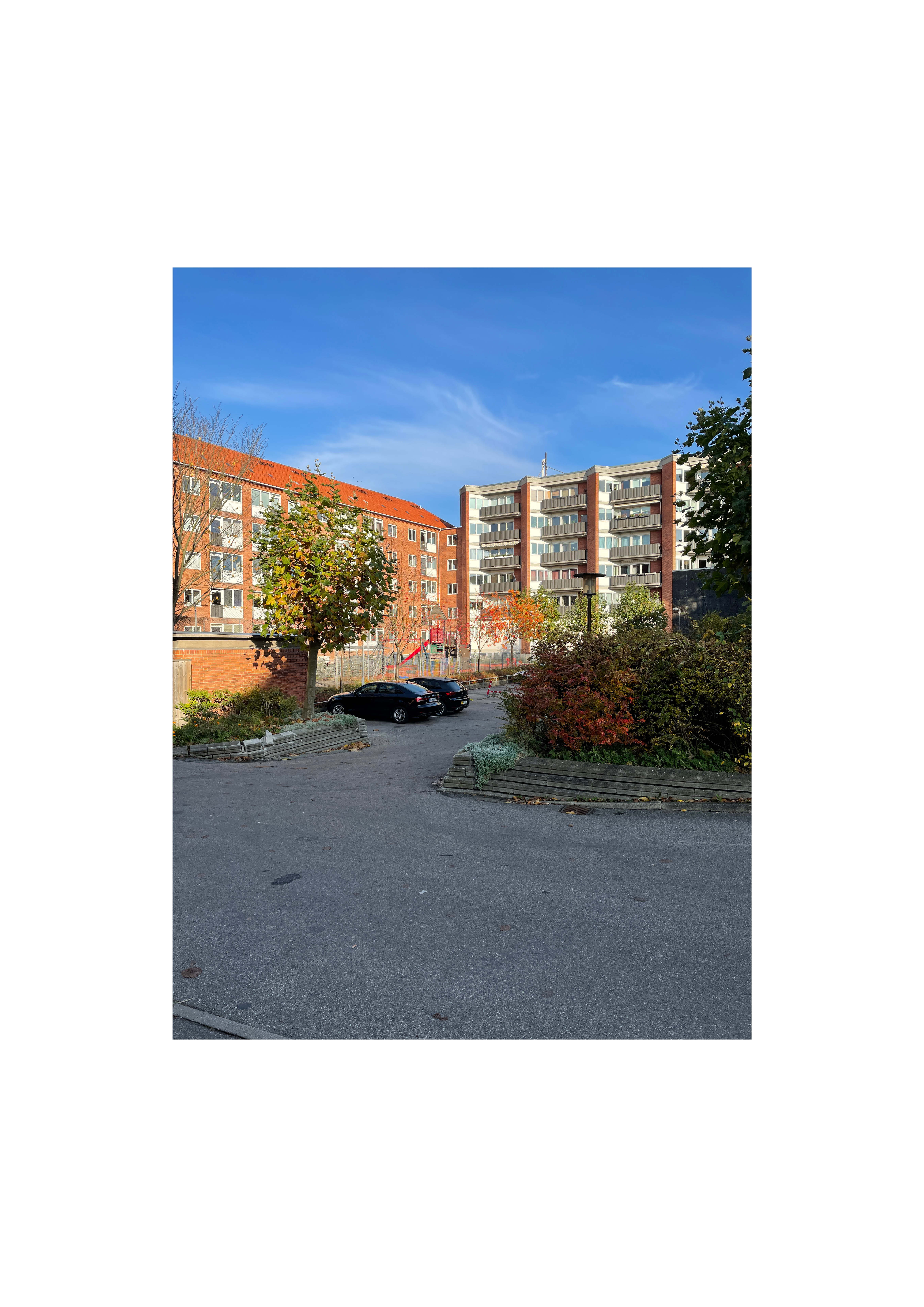Royal Danish Academy / 9th semester / 2022
The practical part of the project focused on the relation between eating and living, with the aim to educate food production and create a community around garden keeping. The project focuses on developing and working with the un- and underused spaces in the city and is in that sense a pilot project that can be adapted elsewhere. The main idea was to create a space that could be inhabited by nature and people alike. A big greenhouse for educational and social gatherings would take up most of the courtyard space of a building complex from the 1960’s and allow for people to meet and engage in plant caring together. With time, the symbiotic relationship between the two governming bodies of the space, namely humans and nature, would form and depending on the maintenance of the garden, this would allow for nature to become autonous and run it’s course if its left to itself.





The site was chosen for it’s central location connecting a wide range of people and institutions that could meet and educate each other here. Close by a subway station and sandwiched by a school and a senior citizen activity center, an open nature resource space would hopefullt bridge some gaps and create new relations for people in the neighbourghood. The courtyard is cornered by a three-legged apartment complex and the activity center developed and built from 1937 to 1961. The courtyard is furnished with a bunch of rarely occupied parking lots, a playground and ball court in rare use and a large bikeshed from the 1960’s. In order to activate the space, most of these disused facilities are taken out and can be reintegrated into the new garden space as self-built, temporary strcutures.







The standardized and easy to access materials were favoured in this project, as it was essential that the structure and area would be open to extensions and add-ons produced by the residents in the nearby buildings. The outset of the greenhouse structure was the human sized garden “shed” readily available off the shelf. A play of scale turns the standard into something unique, but the expression and motif is still something recognisable and “ordinary”.


Part of this project was an investigative theoritical paper, written together with Ji Eun Lee researching the correlation between the spetial qualities of urban farming and how these can make people engage in a more conscious food system. Read the paper here.